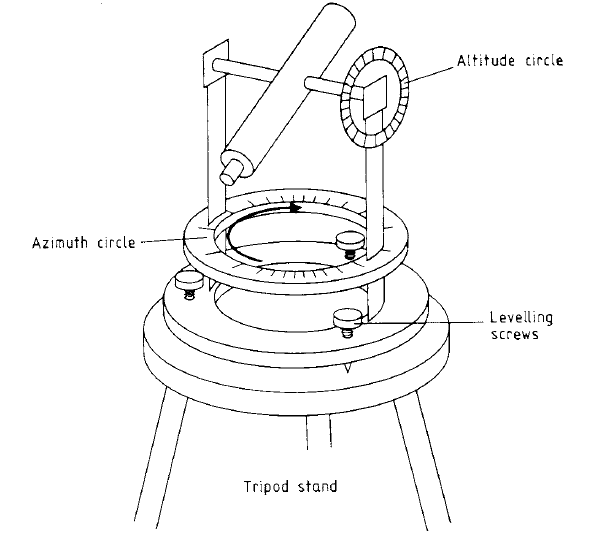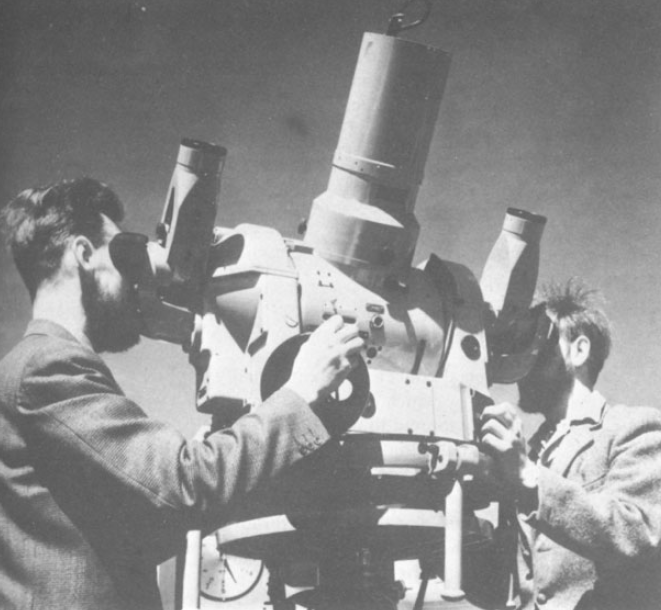


 الفيزياء الكلاسيكية
الفيزياء الكلاسيكية
 الكهربائية والمغناطيسية
الكهربائية والمغناطيسية
 علم البصريات
علم البصريات
 الفيزياء الحديثة
الفيزياء الحديثة
 النظرية النسبية
النظرية النسبية
 الفيزياء النووية
الفيزياء النووية
 فيزياء الحالة الصلبة
فيزياء الحالة الصلبة
 الليزر
الليزر
 علم الفلك
علم الفلك
 المجموعة الشمسية
المجموعة الشمسية
 الطاقة البديلة
الطاقة البديلة
 الفيزياء والعلوم الأخرى
الفيزياء والعلوم الأخرى
 مواضيع عامة في الفيزياء
مواضيع عامة في الفيزياء|
Read More
Date: 6-9-2020
Date: 31-8-2020
Date: 25-2-2016
|
Portable positional instruments: The theodolite
For some purposes, such as surveying, it is useful to have some kind of portable instrument which is capable of determining the position of an observer from measurements made of astronomical objects. Such an instrument is the theodolite.

Figure 1. The theodolite.
The theodolite is essentially a small telescope, with an erecting eyepiece and graticule, which is mounted on an alt-azimuth stand. The basic design is illustrated in figure 1. A horizontal axis is set up between two pillars so that the telescope can be set to any value of altitude. The pillars are secured to a rotatable ring so that the horizontal axis can be directed to any azimuth. Levelling screws and spirit levels allow the instrument to be set up at any site. Graduated circles which are attached to the two axes allow measurements to be made of the azimuth and altitude of any celestial object. Filters are usually provided to cover the objective so that positional measurements can be made of the Sun. Positional measurements can be made with an uncertainty which is typically of the order of a few seconds of arc. By taking readings of the positions of different objects at known times or by taking readings of the position of one object over a known interval of time, the geographic position of the observer can be determined, after applying the relevant corrections for atmospheric refraction, semi-diameter (if the Sun or Moon is observed), etc.
For satellite tracking, special quickly-adjustable theodolites are required and such a system is depicted in figure 2.

Figure 2. A satellite-tracking kinetheodolite of the Royal Observatory, Edinburgh. (By courtesy of the Royal Astronomical Society.)



|
|
|
|
التوتر والسرطان.. علماء يحذرون من "صلة خطيرة"
|
|
|
|
|
|
|
مرآة السيارة: مدى دقة عكسها للصورة الصحيحة
|
|
|
|
|
|
|
نحو شراكة وطنية متكاملة.. الأمين العام للعتبة الحسينية يبحث مع وكيل وزارة الخارجية آفاق التعاون المؤسسي
|
|
|